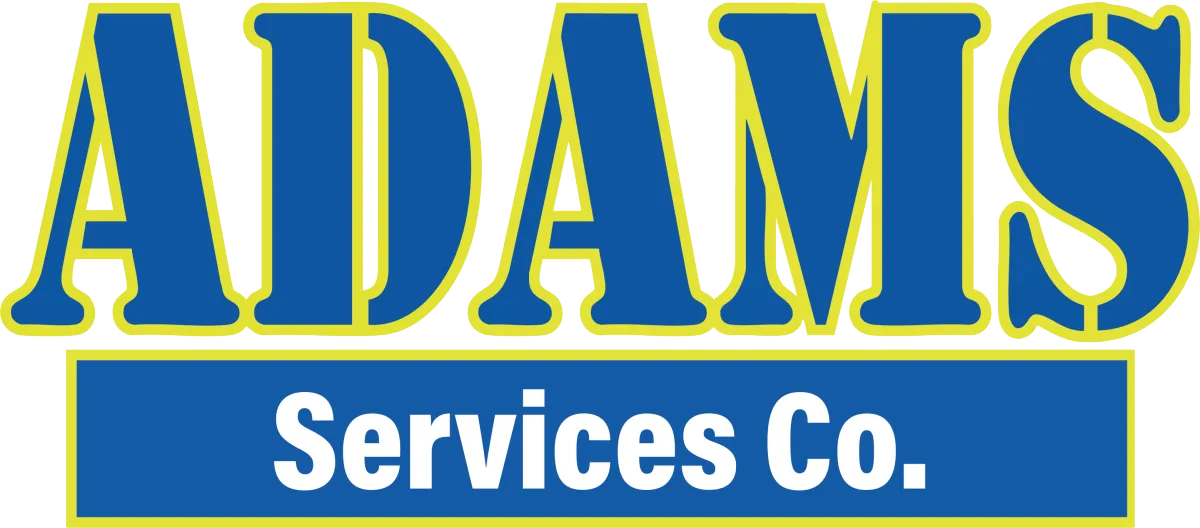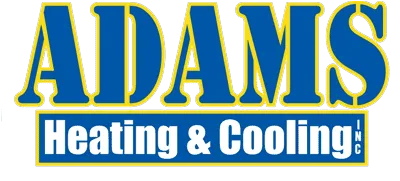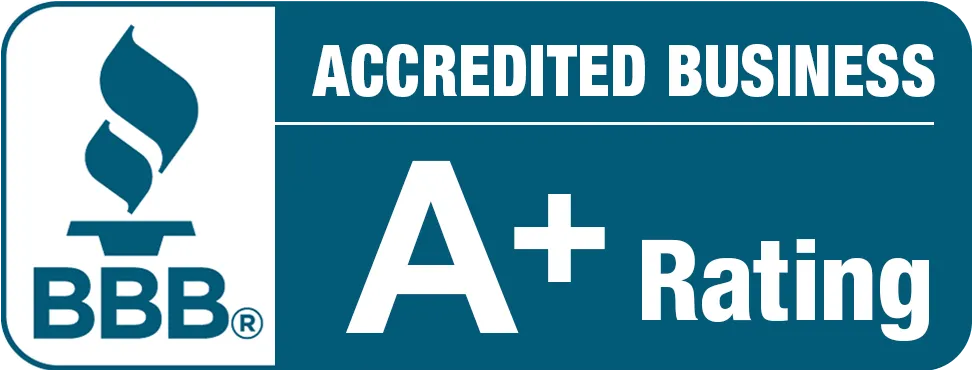Adams Heating & Cooling
HVAC Experts You Can Trust
Serving Tuscaloosa, AL, Birmingham, AL, and surrounding areas since 1982

The Best HVAC Zone Systems for Your Home
In This Article
What is an HVAC Zoning System?
How Do HVAC Zoning Systems Work?
Benefits of an HVAC Zoning System
HVAC Zoning vs. Traditional HVAC Systems
Who Should Consider an HVAC Zoning System?
Real-Life Example: The Smith Family’s HVAC Zoning Experience
Installation Process: How to Get an HVAC Zoning System
Maintenance Tips for Zoned HVAC Systems
Why Choose Adams Heating & Cooling for Your HVAC Zoning System?
Imagine a home where every room is set to the perfect temperature—no more fighting over the thermostat or dealing with uncomfortable hot and cold spots. HVAC zoning systems make this a reality, offering energy efficiency, personalized comfort, and cost savings for homeowners.
At Adams Heating & Cooling, we specialize in cutting-edge HVAC solutions that enhance your home's comfort while reducing energy waste. In this guide, we’ll explore how HVAC zoning works, its benefits, and how it compares to traditional systems, so you can determine if it’s the right upgrade for your home.
Let’s dive in and discover how you can maximize home comfort while saving on energy bills!
What is an HVAC Zoning System?
An HVAC zoning system allows homeowners to divide their home into separate climate zones, each controlled independently. Instead of relying on a single thermostat to regulate temperature for the entire house, a zoning system uses multiple thermostats, dampers, and a central control panel to direct airflow where it’s needed most.
Key Components of an HVAC Zoning System
Thermostats
Thermostats serve as the user interface for each zone, allowing occupants to set and monitor temperatures independently. There are various types of thermostats suitable for zoning systems:
Programmable Thermostats: These devices enable users to schedule temperature settings based on daily routines, enhancing energy efficiency.
Smart Thermostats: Advanced thermostats that learn user preferences, can be controlled remotely via smartphones, and integrate with home automation systems. For instance, the Ecobee Smart Thermostat Premium offers features like air quality monitoring and compatibility with various smart home platforms.
Non-Programmable Thermostats: Basic thermostats that require manual adjustments and are suitable for users who prefer straightforward controls.
Zone Dampers
Dampers are valves or plates located within the ductwork that regulate airflow to different zones. They play a crucial role in directing conditioned air precisely where it's needed.
Common types of zone dampers include:
Manual Dampers: Adjusted by hand, these dampers are less common in modern zoning systems due to the inconvenience of manual operation.
Motorized Dampers: Controlled automatically by the zoning system, these dampers open or close based on signals from the thermostats and control panel. They are essential for efficient and responsive zoning.
Opposed Blade Dampers: Designed with multiple blades that move in opposite directions, providing precise airflow control and reduced noise.
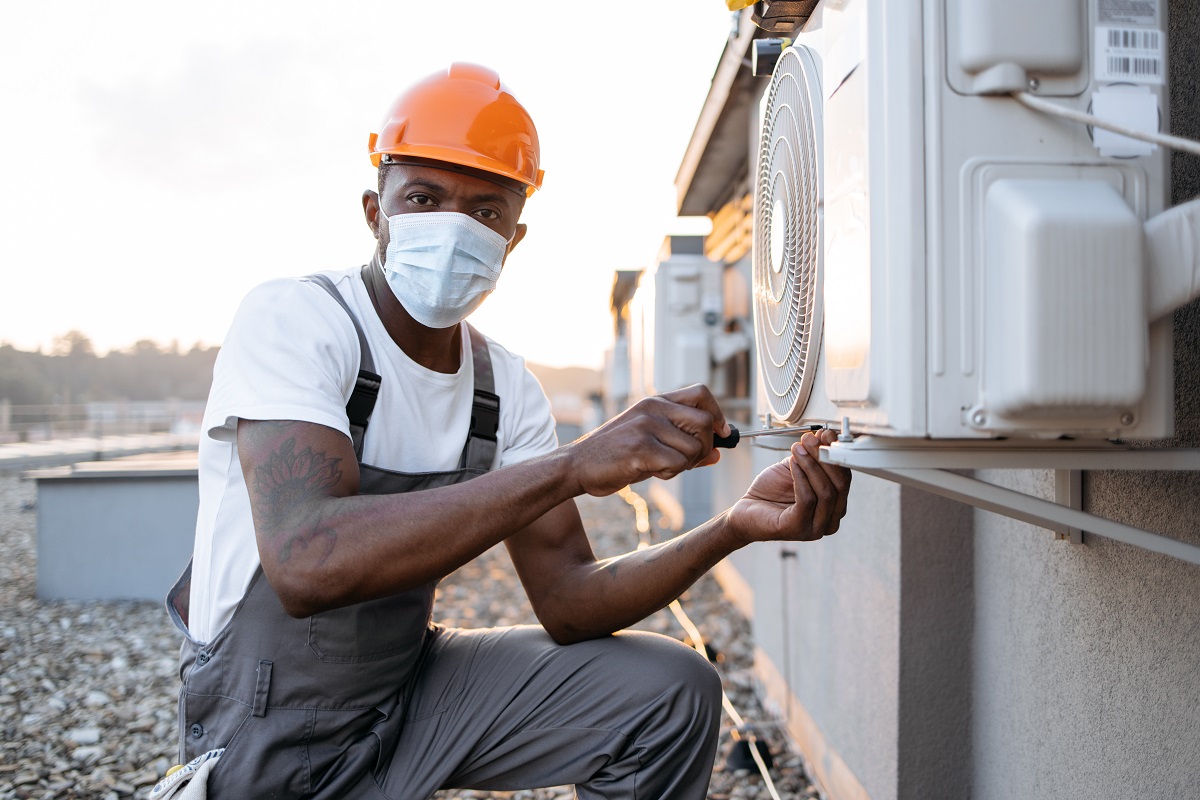
Zoning Control Panel
The control panel acts as the central hub of the zoning system, coordinating communication between thermostats, dampers, and the HVAC unit. Its functions include:
Receiving Temperature Data: Collects information from each thermostat to assess heating or cooling needs.
Managing Damper Positions: Sends commands to dampers to open or close, regulating airflow to maintain desired temperatures in each zone.
System Integration: Ensures that the HVAC equipment operates efficiently by synchronizing with the zoning demands.
By understanding these components, homeowners can appreciate how an HVAC zoning system delivers tailored comfort and improved energy efficiency throughout the living space.
How it Works:
When a thermostat in a specific zone calls for heating or cooling, the control panel activates the system and adjusts the dampers to direct conditioned air only to the zones that need it. This prevents unnecessary energy use in unoccupied areas, leading to significant savings on energy bills.
Fun Fact: According to energy studies, zoning systems can reduce energy bills by up to 30% when properly installed and maintained!
How Do HVAC Zoning Systems Work?
HVAC zoning systems operate by controlling airflow to different areas of a home, ensuring each zone maintains its desired temperature without affecting others. This targeted climate control is achieved through the coordinated interaction of thermostats, dampers, and a zoning control panel.
How HVAC Zoning Systems Work
Thermostat Adjustment
When a thermostat in a particular zone detects a temperature change (e.g., a room becomes too warm), it sends a signal to the control panel.
Zoning Control Panel Communication
The control panel processes the request, determining whether the system needs to heat or cool the affected zone.
Dampers Regulate Airflow
The motorized dampers inside the ductwork open or close based on the request.
For example, if the living room needs cooling while the bedrooms do not, the dampers will restrict airflow to the bedrooms and redirect it to the living room.
HVAC System Activation
If necessary, the HVAC unit adjusts its operation (turning on the air conditioning or heat) to maintain optimal comfort in the active zone(s).
Smart Thermostat Adaptation (For Advanced Systems)
Some smart thermostats learn user preferences and adjust temperatures automatically, optimizing both comfort and energy use.
The Role of Smart Technology in Zoning Systems
Modern HVAC zoning integrates smart thermostats and home automation for even better efficiency:
Wi-Fi-enabled thermostats allow homeowners to adjust temperatures remotely via a mobile app.
Voice command compatibility (Amazon Alexa, Google Assistant) makes controlling each zone effortless.
Machine learning features adapt over time, automatically adjusting temperatures based on past behavior.
Real-World Example: How Zoning Works in a Two-Story Home
Scenario:
The upstairs bedrooms get too hot in the evening, while the downstairs living room remains cool.
Without zoning, adjusting the thermostat affects the entire house, often leading to discomfort in one area.
With HVAC zoning:
The upstairs dampers open, directing cool air where needed.
The living room dampers close, preventing unnecessary cooling.
The result? Energy-efficient climate control and increased comfort for the whole family.
Energy Savings Tip: The U.S. Department of Energy estimates that proper zoning can reduce heating and cooling costs by up to 30%!
Benefits of an HVAC Zoning System
An HVAC zoning system provides numerous advantages, from enhanced comfort to significant energy savings. By controlling temperatures in different areas independently, zoning ensures a more efficient and cost-effective home heating and cooling experience.
1. Energy Efficiency & Cost Savings
One of the biggest benefits of HVAC zoning is the reduction in energy waste. Instead of heating or cooling the entire home, zoning ensures that only occupied areas receive conditioned air, leading to lower utility bills.
🔹 Fact: According to the U.S. Department of Energy, zoning systems can reduce energy bills by up to 30% (source).
How Zoning Saves Energy:
No more over-conditioning: Traditional HVAC systems heat/cool the entire home, even unused rooms. Zoning only targets necessary areas.
Optimized airflow: Dampers direct conditioned air only where it’s needed, preventing unnecessary strain on the system.
Smart thermostat integration: Smart thermostats learn household habits and adjust accordingly, further reducing waste.
2. Enhanced Home Comfort
Tired of hot and cold spots? HVAC zoning eliminates this common issue by allowing each zone to have its own temperature settings.
📌 Example: The upstairs bedrooms in a two-story home often get hotter than the downstairs living area.
With zoning, the bedrooms can stay cooler while the living room remains warm—without adjusting the whole house temperature.
No more thermostat battles – Each zone is controlled separately.
Consistent temperatures – Evenly distribute airflow throughout your home.
Ideal for multi-story homes – Maintain comfort in every part of the house.
3. Extends HVAC System Lifespan
A traditional HVAC system runs at full capacity regardless of how many rooms need heating or cooling, causing more wear and tear. A zoned system reduces workload, helping components last longer.
🔹 Benefit: Less strain = fewer breakdowns = lower maintenance costs.
4. Ideal for Multi-Story Homes & Large Properties
Certain home layouts benefit significantly from zoning:
Multi-story homes – Heat rises, making upper floors warmer than lower ones. Zoning ensures balanced airflow.
Homes with large windows – Sun exposure creates temperature imbalances. Zoning can compensate for this.
Rooms with different occupancy levels – Guest rooms, basements, and home offices don’t need constant conditioning.
5. Reduces Carbon Footprint
A zoned HVAC system aligns with sustainable living goals by minimizing energy consumption.
Less energy use means a lower carbon footprint, benefiting both homeowners and the environment.
HVAC Zoning vs. Traditional HVAC Systems
When deciding whether to upgrade to an HVAC zoning system, it’s essential to understand how it compares to traditional heating and cooling systems.
Traditional HVAC Systems: One-Size-Fits-All Approach
A standard HVAC system typically consists of:
A single thermostat that controls the entire home.
Ductwork that distributes air uniformly, regardless of individual room needs.
A fixed heating and cooling cycle, leading to energy waste and uneven temperatures in multi-story homes or areas with large windows.
Common Issues with Traditional Systems:
Hot & cold spots: Upper floors often get too warm, while basements stay too cool.
Energy waste: Unoccupied rooms get the same level of heating/cooling as occupied spaces.
Thermostat conflicts: Family members battle over the temperature setting.
How HVAC Zoning Systems Solve These Issues
✅ Individual Temperature Control: Each zone gets its own thermostat, so the kitchen, bedrooms, and living room can have different temperature settings.
✅ Energy Efficiency: The system directs conditioned air only where it’s needed, lowering utility costs by up to 30% (U.S. Department of Energy).
✅ Smart Technology Integration: Compatible with Wi-Fi smart thermostats, allowing remote control via mobile apps.
✅ Longer System Lifespan: Since the HVAC unit isn't overworking to heat/cool unused spaces, components experience less wear and tear, reducing maintenance costs.
Side-by-Side Comparison Table

Considering an HVAC upgrade? Explore energy-efficient HVAC installations by Adams Heating & Cooling
Who Should Consider an HVAC Zoning System?
An HVAC zoning system is not just a luxury—it’s a smart investment for many homeowners and businesses looking to improve comfort and efficiency. If you experience temperature inconsistencies, high energy bills, or thermostat disputes, a zoning system could be the perfect solution.
1. Homeowners with Multi-Story Homes
Homes with multiple levels often suffer from uneven heating and cooling due to rising heat and varying insulation levels. Zoning ensures that each floor stays at the desired temperature, preventing overheated upstairs rooms or chilly basements.
✅ Example: Without zoning, the second floor of a home may be too hot in the summer, while the first floor stays cool. A zoning system directs cooler air upstairs, balancing the temperature more efficiently.
2. Families with Different Temperature Preferences
Does your family argue over the thermostat setting? With zoning, each room or area can have its own temperature, making sure everyone stays comfortable.
✅ Example: One family member prefers a cool bedroom at night, while another likes a warmer sleeping environment—with zoning, each person gets their ideal setting without compromise.
3. Homes with Large Open Spaces or Sunrooms
Rooms with large windows or open floor plans often get too warm due to direct sunlight. HVAC zoning allows targeted cooling for these areas without overworking the entire system.
✅ Example: A sunroom heats up quickly in the summer. With zoning, the thermostat in the sunroom triggers cooling without affecting other rooms.
4. Businesses with Different Climate Needs
Retail stores, offices, and restaurants have varying temperature needs in different areas. A zoning system allows customized temperature control based on occupancy levels and workspaces.
✅ Example: A restaurant kitchen generates more heat than the dining area. Zoning lets the kitchen stay cool while keeping guests comfortable in the dining section.
5. Energy-Conscious Homeowners Looking to Lower Utility Bills
Zoning systems prevent energy waste by heating or cooling only occupied areas, reducing monthly energy costs.
✅ Example: In a large home, guest rooms may remain unoccupied for weeks. With zoning, you only heat/cool the used areas, reducing HVAC strain and saving money.
Real-Life Example: The Smith Family’s HVAC Zoning Experience
To illustrate the real-world benefits of an HVAC zoning system, let’s look at how the Smith family transformed their home’s comfort and energy efficiency with Adams Heating & Cooling zoning solution.
Meet the Smith Family
The Smith family lives in a spacious two-story, 3,000-square-foot suburban home in Birmingham, AL. Their household consists of two parents and their two children. However, they have been experiencing issues with their HVAC system, as the temperature varies significantly between floors, causing discomfort and leading to high energy bills. Their goal is to create a more balanced indoor climate while improving energy efficiency and reducing costs.
The Problem: Uneven Heating & Cooling
Like many multi-story homeowners, the Smiths struggled with temperature imbalances:
❌ Upstairs bedrooms were too hot in summer while the downstairs living room remained cool.
❌ Winter heating led to an overheated lower level while the upper floor stayed chilly.
❌ Thermostat conflicts were common, leading to inefficient HVAC operation.
❌ Energy bills were increasing due to constant adjustments to compensate for temperature variations.
The Solution: Installing an HVAC Zoning System
After a consultation with Adams Heating & Cooling, the Smiths decided to install a smart HVAC zoning system with the following features:
✅ Three Climate Zones – One for the upstairs bedrooms, one for the main living area, and one for the basement.
✅ Smart Thermostats – The system was integrated with Smart Thermostats for remote control and automation.
✅ Motorized Dampers – Installed in the ductwork to redirect airflow only where needed, eliminating wasted energy.
✅ Customized Temperature Settings – Each family member could adjust their zone’s temperature without affecting the rest of the house.
The Results: A More Comfortable & Energy-Efficient Home
Within just one month of using their new HVAC zoning system, the Smiths noticed major improvements:
Energy Savings: Their monthly energy bill decreased by 25% due to reduced system strain and targeted heating/cooling.
Improved Comfort: The upstairs stayed cooler in summer, while the downstairs remained cozy in winter without overcompensation.
Reduced Thermostat Adjustments: With independent zone control, there were fewer thermostat conflicts between family members.
HVAC Longevity: The system operated more efficiently, reducing long-term wear and tear.
Find out how HVAC zoning can cut your energy bills
Installation Process: How to Get an HVAC Zoning System
Installing an HVAC zoning system requires professional expertise to ensure optimal efficiency, comfort, and long-term savings. At Adams Heating & Cooling, we take a customized approach to each installation, ensuring your zoning system is tailored to your home's unique layout and needs.
Step 1: Schedule a Professional Consultation
Before installation, an HVAC specialist will assess your home to determine the best zoning configuration. This includes:
✅ Evaluating existing ductwork to ensure it supports zoning.
✅ Identifying the ideal number of zones based on room usage and temperature needs.
✅ Recommending the right thermostats and control panel for your system.
Step 2: Selecting the Right Equipment
An effective zoning system includes smart thermostats, motorized dampers, and a control panel. Your technician will help choose:
📌 Thermostats:
Smart Thermostats (e.g., Smart Thermostats ) allow for remote temperature control and energy tracking.
Programmable Thermostats for scheduling and automation.
📌 Dampers:
Motorized dampers automatically regulate airflow based on each zone’s temperature needs.
Opposed blade dampers reduce noise while improving efficiency.
📌 Control Panel:
Acts as the “brain” of the system, communicating between thermostats and dampers to maintain balanced airflow.
Step 3: Professional Installation Process
Once the right equipment is selected, our licensed HVAC technicians will:
✔ Install the zoning control panel and connect it to your HVAC system.
✔ Mount and wire thermostats in each designated zone.
✔ Modify ductwork and install dampers to regulate airflow.
✔ Test the system for efficiency, ensuring all zones respond correctly.
💡 Timeframe: Most installations take 1-2 days, depending on system complexity and home size.
Explore Adams Heating & Cooling HVAC installation services
Step 4: Post-Installation Testing & Customer Training
Once installation is complete, we:
Test each zone to ensure accurate temperature control.
Demonstrate how to use your new system, including thermostat settings.
Provide maintenance tips to keep your system running efficiently.
Get expert HVAC maintenance with Adams Heating & Cooling
Step 5: Enjoy Your New Zoning System!
With your new HVAC zoning system in place, you can now experience:
✔ Custom temperature control in every zone
✔ Lower energy bills with improved efficiency
✔ Enhanced comfort for your entire home
Maintenance Tips for Zoned HVAC Systems
To keep your HVAC zoning system running efficiently, regular maintenance is essential. Proper upkeep ensures consistent comfort, lower energy bills, and a longer system lifespan. Here’s how to maintain your zoned HVAC system for optimal performance.
1. Regularly Inspect & Clean Dampers
Since motorized dampers regulate airflow in your zoning system, they must be checked periodically to ensure proper operation and airflow control.
✅ What to Do:
Inspect dampers every 6 months to check for dust buildup or obstructions.
Ensure dampers are opening and closing correctly—listen for any unusual noises that could indicate a mechanical issue.
If dampers are stuck, consult a professional HVAC technician for servicing.
2. Change Air Filters Regularly
Dirty air filters restrict airflow, forcing your HVAC system to work harder, which increases energy costs and reduces efficiency.
✅ How Often to Replace Filters:
Standard filters: Every 1-3 months
High-efficiency filters: Every 6-12 months
Homes with pets/allergies: Every 30-60 days
Improve your indoor air quality with energy-efficient HVAC systems
3. Keep Thermostats Properly Calibrated
Each thermostat controls a specific zone, so it’s important that they remain accurate to maintain consistent temperatures.
✅ Thermostat Maintenance Tips:
Check for dust buildup around thermostat sensors.
Ensure thermostats are not placed near heat sources or direct sunlight, which could cause false readings.
If your system has smart thermostats, update the software regularly to maintain efficiency.
4. Schedule Professional HVAC Inspections
Having your system checked by licensed HVAC professionals ensures everything is operating smoothly and efficiently.
✅ Recommended Inspection Schedule:
Bi-Annual Maintenance: One checkup before summer and another before winter.
Full System Inspection: Every 1-2 years to assess the zoning control panel, dampers, and thermostats.
5. Monitor Airflow in Each Zone
If a particular zone is not heating or cooling properly, it could indicate an airflow restriction or damper issue.
✅ How to Check:
Walk through each zone and compare temperature levels to ensure consistency.
If you notice uneven temperatures, check if vents are blocked by furniture or debris.
Listen for unusual noises coming from the ducts—this could indicate a damper malfunction.
6. Clean Vents and Ductwork
Over time, dust and debris accumulate in the ductwork, reducing airflow and affecting HVAC performance.
✅ How to Maintain Clean Ducts & Vents:
Vacuum vents and registers regularly to prevent blockages.
Schedule professional duct cleaning every 3-5 years to maintain air quality.
Ensure that furniture and rugs do not block vents, as this disrupts airflow.
7. Ensure Proper Smart Thermostat Settings
If your zoning system uses smart thermostats, optimizing their settings can enhance efficiency and comfort.
✅ Best Practices:
Use programmable schedules to adjust temperatures based on occupancy.
Enable energy-saving modes to reduce costs when no one is home.
Connect thermostats to Wi-Fi and smart home assistants for remote adjustments.
Why Choose Adams Heating & Cooling for Your HVAC Zoning System?
✅ Expert HVAC Technicians – Our team is trained in the latest zoning technology, ensuring seamless installation and maintenance.
✅ Custom Solutions for Every Home – Whether you have a multi-story home, large open spaces, or a business with unique climate needs, we’ll design a personalized zoning system for you.
✅ Smart Thermostat Integration – We install the best smart thermostats, including remote access and automation.
✅ Energy-Efficient Solutions – Our systems help homeowners save up to 30% on energy bills (U.S. Department of Energy).
✅ Reliable Service & Maintenance – Beyond installation, we provide ongoing maintenance to keep your system running smoothly.
How to Get Started
Step 1: Schedule a Free Consultation
Our HVAC experts will assess your home’s layout, existing system, and comfort preferences to determine the best zoning solution for you.
📞 Call us now at Adams Heating & Cooling or schedule online.
Step 2: Get a Customized Zoning Plan
After assessing your needs, we’ll create a personalized zoning plan that includes:
✔ The optimal number of zones for your home or business
✔ Recommended thermostat upgrades and control panel options
✔ A cost estimate with flexible financing options
Step 3: Professional Installation by Certified Technicians
Once you approve your customized zoning plan, our technicians will:
✔ Install motorized dampers in the ductwork
✔ Set up smart thermostats for each zone
✔ Configure your HVAC zoning control panel
✔ Conduct post-installation testing to ensure everything works flawlessly
Step 4: Enjoy Comfort & Energy Savings
With your new HVAC zoning system, you’ll experience:
✔ Consistent temperatures throughout your home
✔ Lower energy bills with efficient heating and cooling
✔ Customized climate control for every family member or workspace
Take Action Today!
There’s no better time to upgrade your home’s comfort and efficiency with a customized HVAC zoning system. Let Adams Heating & Cooling design the perfect solution for you.
📞 Call us now or schedule your consultation online
💡 Your comfort is our priority—let’s create a smarter, more energy-efficient home together!
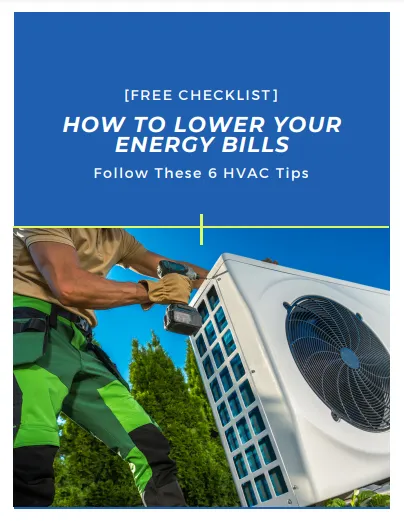
Tired of seeing those sky-high electric bills?
It's time to take control of your energy costs, and your HVAC system is a great place to start!
No more sweating over those monthly expenses!
Grab our FREE checklist to discover simple, yet effective, ways to lower your energy consumption and save money on your electric bill.
Inside this handy guide, you'll find:
Easy-to-follow tips to optimize your HVAC system's efficiency.
Common energy-wasting mistakes to avoid.
Actionable steps to make a real difference in your energy usage.
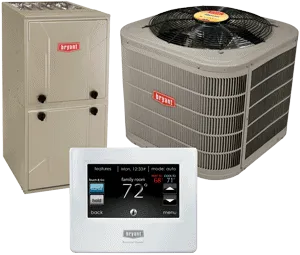
Free Estimates on Complete System Replacement
Call Now 205-339-6540
Office: 3415 Hargrove Road East,
Tuscaloosa, AL 35405
Office: 1236 Blue Ridge Blvd, Suite 111, Hoover, AL 35226
Call 205-339-6540
Call 205-606-4222
Email: [email protected]
